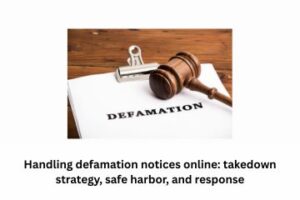Definition of State for the Enforcement of Fundamental Rights
Table of Contents
- Introduction
- Understanding Article 12
- Definition of ‘State’
- Justiciability of Fundamental Rights
- The doctrine of Horizontal and Vertical Application
- Case Law: State of Punjab v. Manjit Singh
- Case Law: R.D. Shetty v. International Airport Authority of India
- The Debate: State Action Doctrine
- Conclusion
Introduction
The enforcement of fundamental rights is a cornerstone of any democratic society. In this regard, it is essential to examine the definition of ‘State’ within the context of fundamental rights and the justifiability of these rights. This article delves into the legal framework surrounding the definition of ‘State’ and analyzes the justiciability of fundamental rights, highlighting key concepts, case laws, and debates.
Understanding Article 12
Article 12 of the Constitution defines the term ‘State’ and outlines its meaning for the purpose of fundamental rights enforcement. It clarifies that ‘State’ includes the government and Parliament of India, as well as the government and legislature of each state within the country. However, the definition of ‘State’ goes beyond these obvious entities and extends to other instrumentalities, authorities, and agencies that perform governmental functions.
Definition of ‘State’
The term ‘State’ in the context of fundamental rights refers to the entity or entities responsible for the governance and administration of a country. It encompasses not only the government but also various instrumentalities, authorities, and agencies exercising governmental functions. The definition of ‘State’ is crucial in determining the obligations and accountability of these entities regarding the protection and enforcement of fundamental rights.
Justiciability of Fundamental Rights
Fundamental rights are legal guarantees granted to individuals to safeguard their basic freedoms, liberties, and dignities. The justiciability of fundamental rights relates to their enforceability through legal mechanisms, such as courts or tribunals. It determines whether individuals can approach judicial bodies to seek protection, remedies, or redress in case of violation or infringement of their fundamental rights.
The doctrine of Horizontal and Vertical Application
The doctrine of horizontal and vertical application plays a significant role in determining the justiciability of fundamental rights. Vertical application refers to the enforcement of fundamental rights against the State or governmental authorities. Horizontal application, on the other hand, deals with the enforcement of fundamental rights against private individuals or entities. The distinction between horizontal and vertical application has implications for the scope and extent of fundamental rights protection.
Case Law: State of Punjab v. Manjit Singh
In the landmark case of State of Punjab v. Manjit Singh, the Supreme Court of India addressed the issue of the definition of ‘State’ and its implications for the enforcement of fundamental rights. The court held that the term ‘State’ includes not only the government but also any authority or body performing governmental functions. This expansive interpretation broadened the scope of fundamental rights protection, ensuring that individuals could seek redress even against non-governmental entities exercising public functions.
Case Law: R.D. Shetty v. International Airport Authority of India
In the case of R.D. Shetty v. International Airport Authority of India, the Supreme Court interpreted the definition of ‘State’ under Article 12. The court held that an entity would qualify as ‘State’ if it fulfilled two conditions: first, it was an authority or an instrumentality of the government, and second, it performed governmental or public functions. This case emphasized the importance of the functional test in determining whether an entity falls within the definition of ‘State.’
The Debate: State Action Doctrine
The justifiability of fundamental rights often sparks a debate regarding the scope of State action. The State action doctrine posits that fundamental rights are enforceable only when there is direct State involvement or action. This doctrine excludes private individuals or entities from the purview of fundamental rights enforcement. However, counterarguments contend that fundamental rights should extend to private actors as well, particularly when they perform functions of a public nature or when the State fails to protect individuals adequately.
Conclusion
The definition of ‘State’ for the enforcement of fundamental rights is a critical aspect of any legal system. It determines the entities responsible for upholding and protecting these rights. The justiciability of fundamental rights is essential to ensure their effectiveness and meaningful application. While the doctrine of State action poses limitations, evolving interpretations and case laws have expanded the scope of fundamental rights protection. The ongoing debate surrounding the justifiability of fundamental rights against private actors highlights the need for a balanced approach that considers both individual liberties and societal interests. Ultimately, the proper definition of ‘State’ and the justiciability of fundamental rights play a vital role in safeguarding democratic principles and fostering a society that respects and protects the rights and freedoms of all individuals.
Keywords: Definition of State, enforcement of fundamental rights, justiciability, legal framework, government, instrumentalities, authorities, agencies, horizontal application, vertical application, case law, State of Punjab v. Manjit Singh, State action doctrine, private actors, public functions, limitations, evolving interpretations, societal interests, democratic principles.




